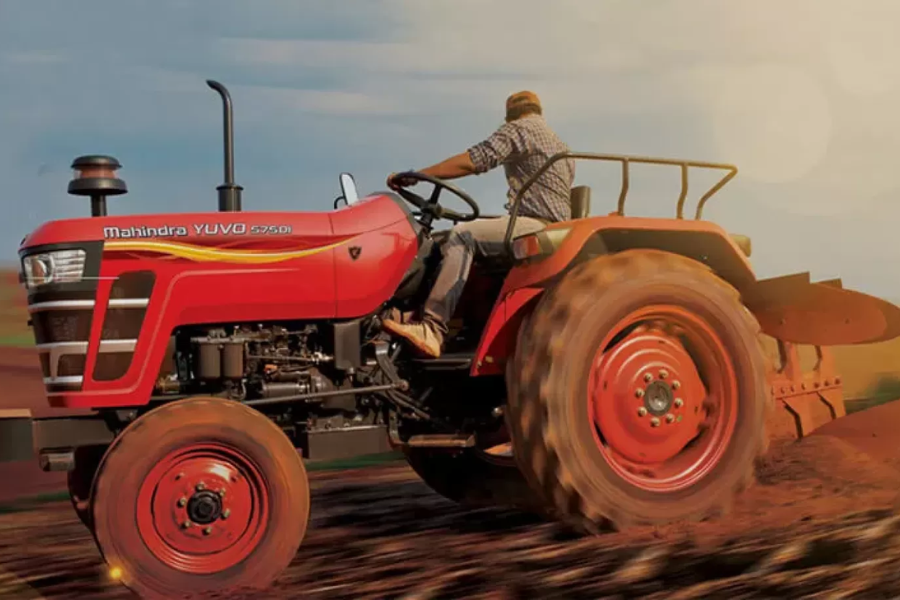Key Takeaways
- Understand the different types of agricultural tractors that are available.
- Find out some essential factors to take into account while choosing a tractor.
- Gain insights into how technology is influencing modern tractors.
- Find tips for maintaining your tractor for long-term efficiency.
Choosing the right agricultural tractor involves evaluating farm needs, understanding different tractor types, and considering factors like horsepower, size, and versatility. Key aspects include assessing tasks, terrain, and necessary attachments. Proper research and informed decisions ensure optimal performance, efficiency, and productivity for various agricultural operations.
The Diverse Types of Agricultural Tractors
Choosing the right agricultural tractor starts with understanding the types available. Tractors can vary significantly based on their intended use. Compact tractors provide flexibility and maneuverability in confined areas, making them perfect for small farms and gardens. These tractors can handle mowing, tilling, and light hauling. Utility tractors serve more extensive operations with their robust and multi-functional capabilities, making them suitable for various farm activities from plowing and planting to harvesting.
For more specialized tasks, row-crop tractors are designed for crops planted in rows, with features that allow for high clearance and various attachments. Orchard tractors are compact and have a narrow wheelbase, making them perfect for navigating the tight spaces between trees in an orchard. Considering the wide range of options, if you’re in the market for one, many options for tractors for sale cater to different needs.
Key Features to Look For in a Tractor
When selecting a tractor, it’s essential to consider critical features impacting its performance on your farm. Horsepower is a primary factor to assess, as it determines the tractor’s ability to perform heavy-duty tasks. More horsepower generally means better performance but can also increase costs. It’s essential to match the horsepower to your specific needs.
Don’t overlook the importance of choosing the right transmission type—manual, automatic, or hydrostatic. Each type has advantages depending on the terrain and the tasks. Another crucial feature is the availability of attachments such as loaders, backhoes, and mowers, which can significantly enhance the tractor’s versatility.
Moreover, ergonomics and ease of use should also be high on your checklist. Features like air-conditioned cabs, ergonomic seats, and user-friendly control panels can make long hours in the field more manageable. Modern conveniences like Bluetooth connectivity and advanced display screens can enhance the user experience.
The Impact of Technology on Modern Tractors
Technology has revolutionized the agricultural industry, and tractors are no exception. Modern tractors now come equipped with GPS systems that enable precision farming, allowing for precise planting, fertilization, and harvesting. Automated steering systems can reduce operator fatigue and improve efficiency by maintaining accurate paths across the field.
Innovative features like drone compatibility and data analytics are also entering the agricultural sector. By integrating these technologies, farmers can increase efficiency and reduce operational costs. According to a recent report on agricultural technology, farms leveraging modern technologies can see up to a 20% increase in productivity. This boost in productivity can translate to higher yields and better resource management.
Maintaining Your Tractor for Longevity
Maintaining your tractor correctly is essential to its lifetime and dependability. Checking tire pressure, hydraulic systems, and oil levels regularly can help prevent minor concerns from developing into larger ones. Additionally, it’s important to replace filters and lubricate moving parts as the manufacturer recommends.
Scheduling professional inspections and services is another essential aspect of maintenance. A recent article suggests that adhering to a consistent maintenance schedule can extend the life of your tractor by several years. Keeping a detailed log of maintenance activities helps ensure that everything is noticed and that the tractor operates at peak performance.
Understanding Tractor Financing Options
Investing in a tractor can be a significant financial decision, but various financing options are available to make this investment more manageable. Lease-to-own agreements offer the flexibility to use the tractor while making periodic payments, with the option to purchase the tractor at the end of the lease term. This can be an attractive option for farmers who need equipment immediately but may need more funds for an outright purchase.
Traditional loans, whether through banks or agricultural lenders, can provide the necessary capital with manageable repayment terms. It’s vital to compare interest rates, loan terms, and repayment schedules to ensure the best fit for your financial situation. Additionally, government grants and subsidies for agricultural equipment can provide much-needed assistance, particularly for new and small-scale farmers.
Consulting with a financial advisor specializing in agricultural investments can be particularly beneficial. They can assist you in navigating the many financing alternatives and locating programs that provide extra perks or attractive terms.
Tips for Safe Tractor Operation
Safety should always be a priority when operating a tractor. Ensure you are well-versed with the tractor’s manual and all its safety features. This includes understanding the proper use of lights, signals, and safety guards. Always follow operational protocols, such as turning off the tractor and setting the brake before dismounting.
Wearing the appropriate protective gear, including gloves, supportive shoes, and safety glasses, helps prevent injuries. Keeping a first-aid kit and an emergency contact list on hand is also a good safety practice. Additionally, regular safety drills can prepare you and your team for emergencies.
Consider taking a tractor safety course to become more proficient in handling your equipment. Essential subjects, including safe towing techniques, attachment usage, and rollover prevention, are frequently included in these seminars. Safety should always come first since doing so will make accidents less likely and increase security.
The Future of Tractors in Agriculture
The future of agricultural tractors looks promising, with advancements in automation and sustainability. Electric and autonomous tractors are on the horizon, promising to make farming more efficient and eco-friendly. Electric tractors may reduce their reliance on fossil fuels and greenhouse gas emissions by using renewable energy sources.
With sophisticated sensors and artificial intelligence (AI) technology, autonomous tractors can work without human supervision and carry out precise operations like planting, weeding, and harvesting. These innovations are expected to significantly change how farming is conducted, making it more sustainable and productive.
Experts in the field anticipate that these technological developments will enhance agricultural yields and lessen farming’s adverse environmental effects. As they become more widely available, farmers of all sizes may use these technologies to improve their operations and help ensure a more sustainable agricultural future.
Keep an eye for more news & updates on BuzzsLash.Com!




